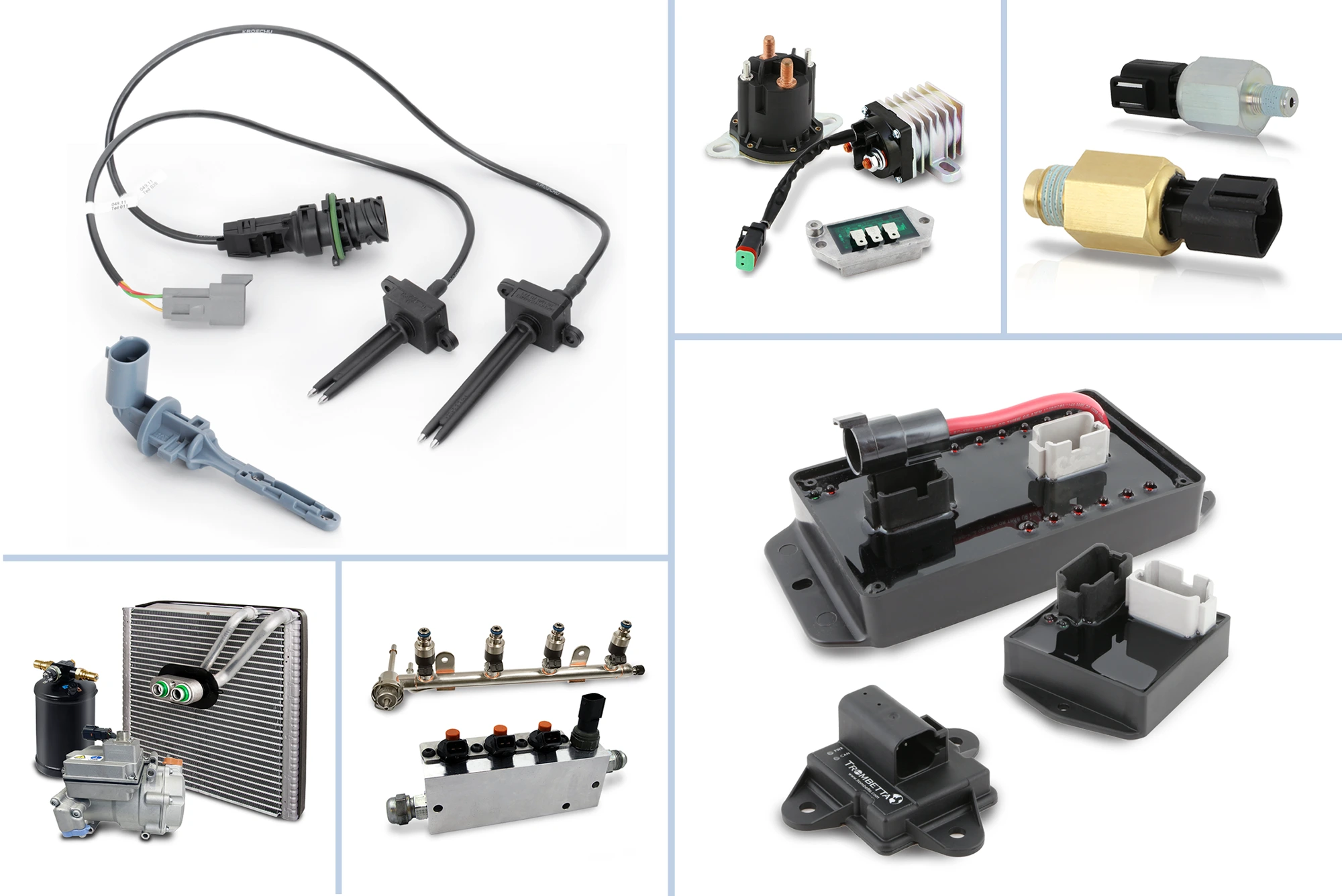August 22, 2022 / Training
Variable Valve Timing (VVT) Operation
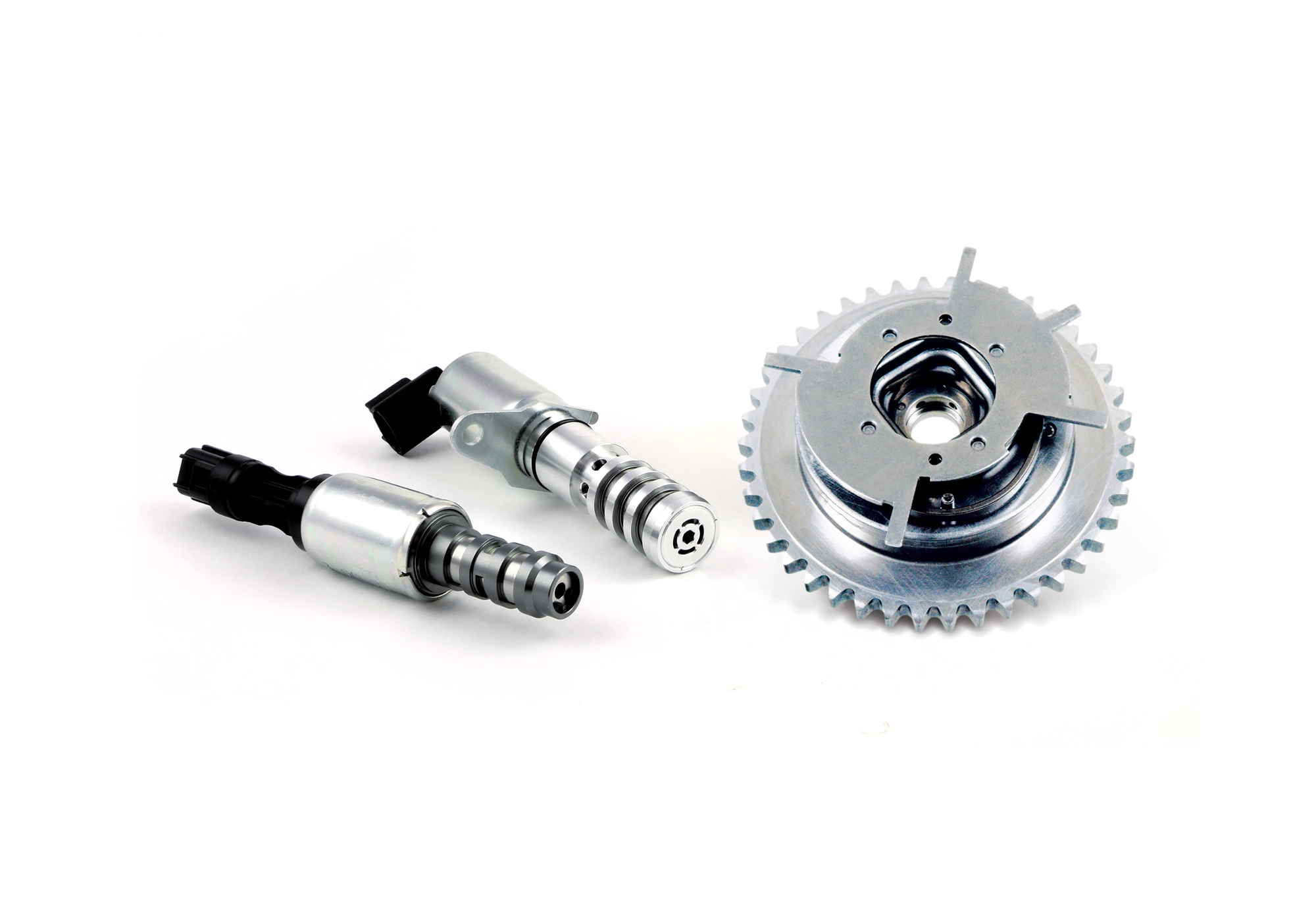
VVT Solenoids and Sprockets
What do Variable Valve Timing (VVT) Solenoids (Oil Control Valves) and Sprockets (Actuators or Phasers) do? The VVT Solenoid meters the oil flow to control the actuation of the VVT Sprocket. The VVT Sprocket mechanically shifts the position of the camshaft. This mechanical shifting (or phasing) of the camshaft affects the efficiency of the engine in order to produce more power in certain situations, while minimizing emissions in others. While diagnosing system faults, it is important to check the oil level, the oil condition and the oil pressure. Many systems are oil-driven and a low oil level can cause them to be starved for oil. Be sure to verify oil pressure when dealing with VVT faults. If an oil specification is not found in service information, most VVT systems require at least 25 psi at hot idle for proper operation.
Typical Solenoid Testing
The VVT Solenoids (Oil Control Valves) are generally located on and/or around the cylinder head. The typical wiring for an oil control solenoid is battery voltage power supply and the control circuit. The actuated position is varied based on the PCM commands to advance or retard the engine’s valve timing.
Note: It is always recommended to refer to service information for the specific vehicle you are working on.
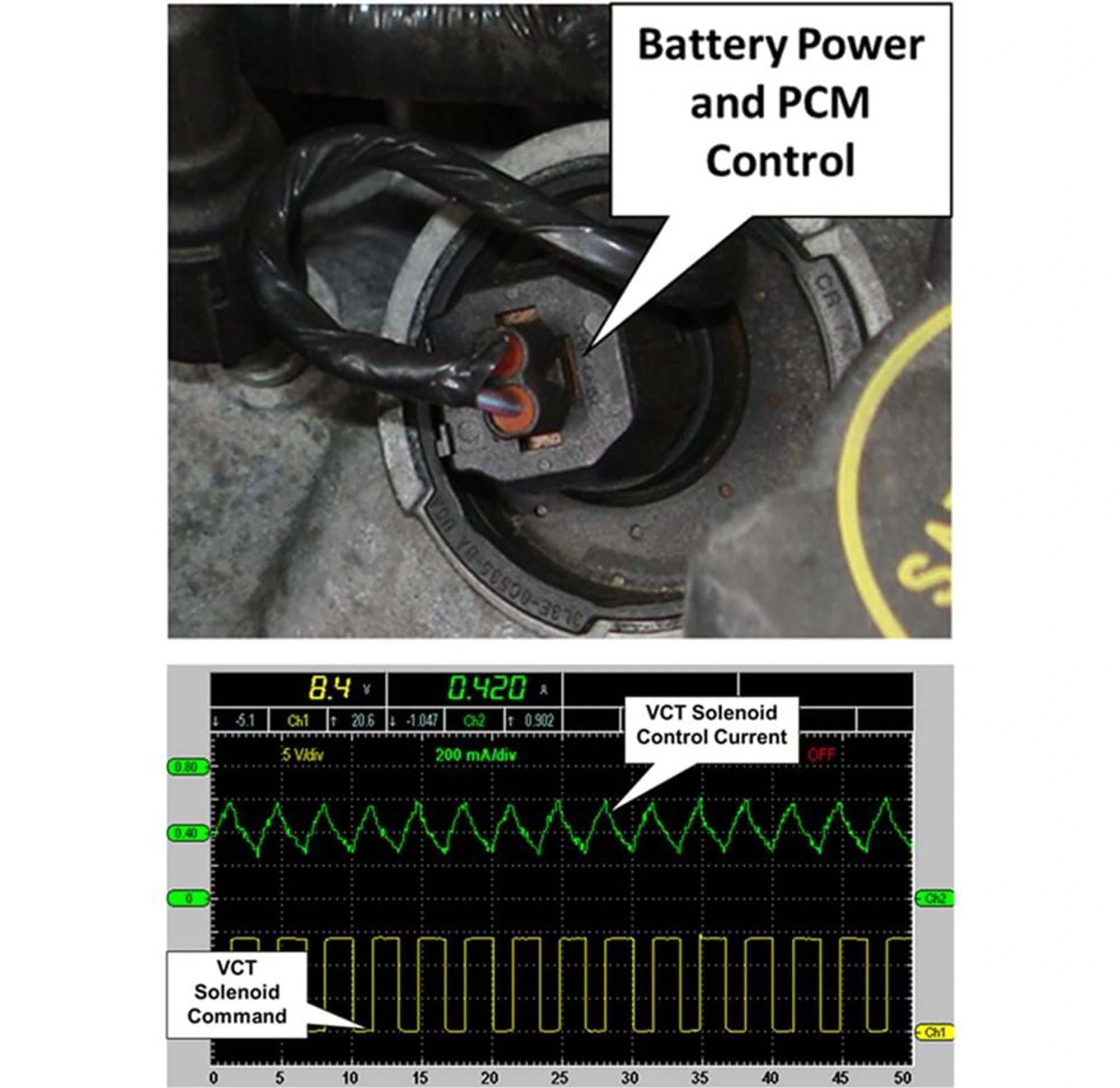
Power Tip - Common Causes of Failures
- Lack of regular scheduled engine oil and filter service
- Incorrect engine oil added to the crankcase
- Restricted internal OCV (oil control valve) filter
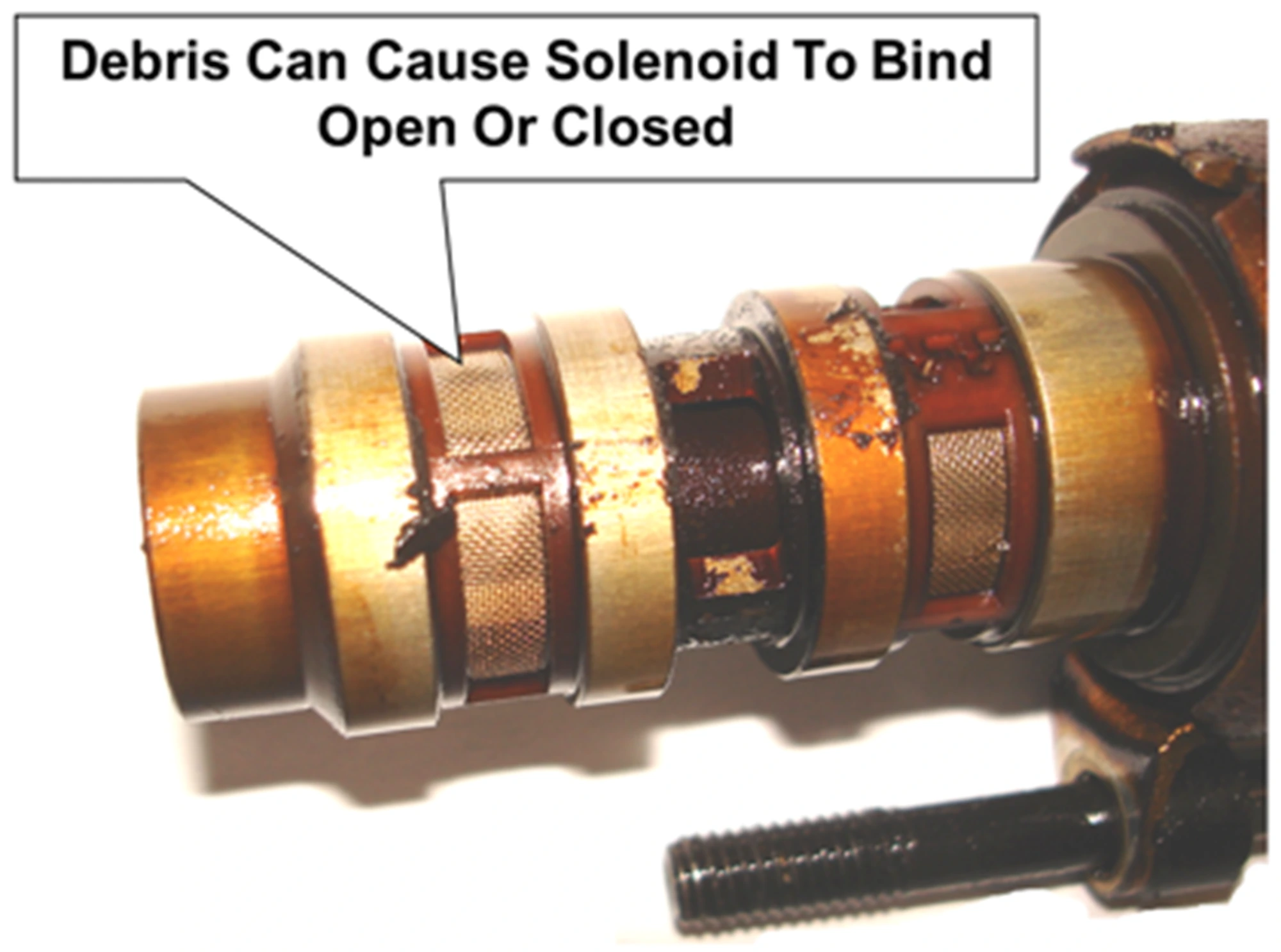
Typical Scan Data Testing
The VVT Sprockets are located on the camshaft(s). At the appropriate time, the ECM will send a duty cycle command (between 0-100%) to the solenoid, which will cause the spool valve inside the solenoid to move. Oil will then be directed to the actuators (sprockets) causing camshaft phasing. The computer monitors this movement based on input from the cam and crank sensors. This can be viewed in many vehicles using scan tool data. Desired movement by the computer should be matched closely by actual movement of the actuator.
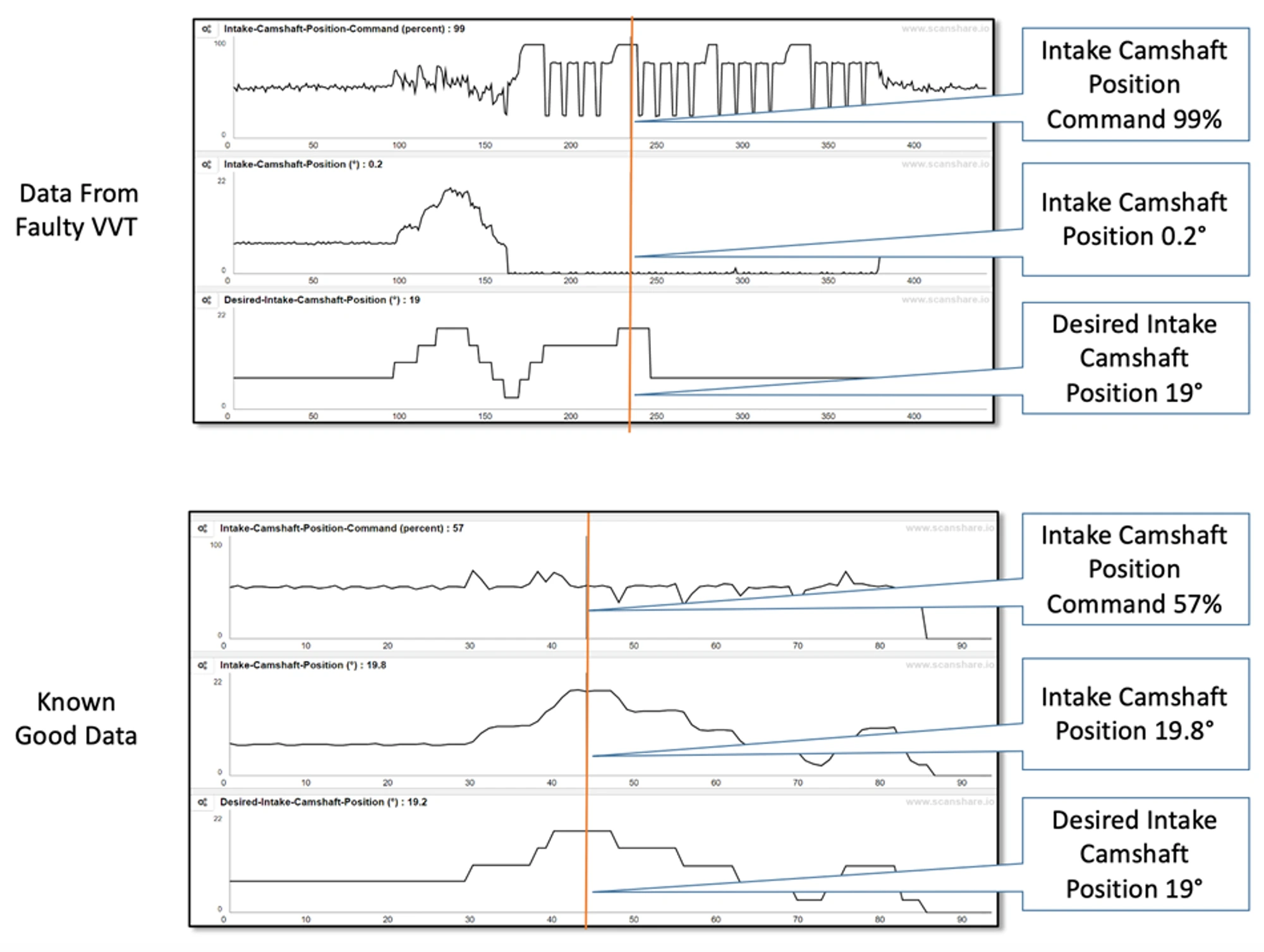
Power Tip – The ECM can command the actuator to any position desired. Once the cam is phased at the commanded angle, the ECM will send a new duty cycle command to the solenoid that will position the spool valve such that the same amount of oil pressure will be present in both the actuators advance and retard cavities. While the duty cycle for the hold command may vary between 35% and 55%, it should hold fairly steady.
Power Tip – When replacing a solenoid or sprocket, it is recommended that, if equipped with multiple solenoids or sprockets, they also be replaced to prevent comebacks. An oil and filter change should also be performed.
March 01, 2024 / Training
Why Pentastar Oil Filter Housings Fail
In service since 2011, the Chrysler Pentastar 3.6L engine has powered more than 10 million of the most popular vehicles on the road. These Pentastar engines are equipped with oil filter housings, which contain the oil filter, sensors, and a heat exchanger to help cool the oil. The oil filter housings on the Pentastar V6 engine have become known for their high failure rates. These failures have mistakenly been attributed the idea that the housings can warp due to heat, but this has been proven false. So, why do these units typically leak?
August 15, 2022 / Training
Variable Valve Timing (VVT) Repair Tips
Variable Valve Timing (VVT) or Variable Cam Timing (VCT) is common on most newer engines. These systems are designed to reduce emissions and maximize engine performance and fuel economy. Here's some background on VVT and a few tips for dealing with issues that come up.
August 08, 2022 / Training
Turbocharger Diagnosis Tips
Turbocharged engines are becoming more popular, as vehicle manufacturers look to increase fuel efficiency, maintain performance and reduce emissions. Symptoms of a malfunctioning turbocharger include loss of power, excess smoke, high fuel consumption, overheating, high exhaust temperature and oil leaks from the turbo. Here are a few important diagnostic and repair tips to keep in mind.
August 12, 2022 / Training
Tire Pressure Monitoring System (TPMS) Repair Tips
The Tire Pressure Monitoring System (TPMS) is a safety device that measures, identifies and warns you when one or more of your tires is significantly under-inflated. Standard® and Intermotor® are committed to helping technicians with TPMS repairs, whether it’s offering OE-Match TPMS sensors or providing repair tips from our team of ASE-certified master technicians. Here are a few TPMS repair tips.
August 05, 2022 / Training
Mass Air Flow (MAF) Sensor FAQs
The Mass Air Flow (MAF) sensor is a key component of the engine’s fueling strategy. It is crucial that the MAF sensor reports with 100% accuracy to ensure peak performance, fuel economy and reduced emissions. Here are some helpful tips such as how and when to replace them and steps to extend their longevity.
August 01, 2022 / Training
Diesel Engine Repair Tips
Diesel Engines have become more popular thanks to a steady string of advancements. New engine designs, noise and vibration-damping technologies, and improvements like electronic engine control have spawned a new generation of engines that are more powerful and fuel efficient than similar-size gasoline engines. Learn more about today's diesel engines with these repair tips from our team of ASE-certified master technicians.
January 01, 2023 / Training
A Closer Look: Variable Valve Timing
In an effort to increase fuel efficiency and elevate performance across today’s vehicles, nearly every manufacturer has equipped new vehicles with Variable Valve Timing (VVT) technology, also known as Variable Cam Timing (VCT).
January 05, 2024 / Training
A Closer Look: Turbochargers
Turbocharger Opportunities: In an effort to increase fuel efficiency, maintain performance, and reduce emissions, vehicle manufacturers are adding turbocharged engines to their lineups at a significant rate. Over the next five years, the turbo service market will continue to experience substantial growth.
September 19, 2022 / Training
A Closer Look: Turbocharger Operation and Installation
Turbochargers consist of just three major internal components: the turbine, the compressor and the bearing system that supports the turbine shaft. In an effort to increase fuel efficiency, maintain performance and reduce emissions, vehicle manufacturers are adding turbocharged engines to their lineups at a significant rate.
September 16, 2022 / Training
A Closer Look: Tire Pressure Monitoring Systems (TPMS) Operation
The Tire Pressure Monitoring Systems (TPMS) is a valid safety device that has been mandated for years. TPMS introduced a lot of new terminology – initiate, program, activate, clone, protocol and relearn. This safety system, a prime service opportunity, warns drivers of issues with their tires and protects motorists from potential danger.
January 15, 2024 / Training
A Closer Look: Servicing Electric and Hybrid Vehicles
Hybrid vehicles have been sold in the U.S. for over 20 years. As hybrids continue to grow in popularity, and as fully electric vehicles have entered the market in the past several years, they have brought with them numerous service opportunities for aftermarket repair facilities. Whether shops dive in and get involved with replacing batteries, inverters, or other high-voltage components, or they stick to light-duty servicing, there is plenty of work to go around.
January 08, 2024 / Training
A Closer Look: Ignition Coils
Engine misfires, rough idle, a decrease in power under acceleration, poor fuel economy, and a check engine light are all signs of an ignition coil that has failed. OE coils are known for their high failure rates. Read along for more information on ignition coils, how to diagnose a failed one, and why an original equipment manufacturer’s coil may not be the best replacement choice.
January 12, 2024 / Training
A Closer Look: Gasoline Direct Injection (GDI)
Gasoline direct injection (GDI) is used on most new vehicles and requires a different approach to diagnosis and service. GDI technology has been an integral part of helping to improve fuel economy while reducing emissions and can be found in more than half of the U.S. fleet. In fact, the use of GDI engines has grown by over 600% since 2010. This means that in the next five years, 42 million more vehicles with GDI will enter the Aftermarket “Sweet Spot” of 6-12 years old, during which their injectors and related parts may need to be serviced or replaced. While GDI systems have proved effective, these systems encounter specific failures and require an understanding of how they work and how to test them when they set a code.
January 26, 2024 / Training
A Closer Look: Emissions
The Check Engine Light (CEL) is arguably one of the most effective yet underappreciated advancements in reducing vehicle emissions. Following the introduction of On-Board Diagnostics II (OBD II), the CEL is illuminated continuously if an on-board system monitor has failed a specified number of times and is negatively affecting emissions. If a catalyst-damaging event, such as a misfire, occurs, the CEL will flash. In today’s world of electric vehicles, hybrids, and partial zero-emission vehicles, many people forget that simply keeping their internal combustion engine (ICE)-powered vehicle operating as designed will help in reducing emissions.
September 12, 2022 / Training
A Closer Look: Electronic Throttle Bodies and Control Systems
Electronic Throttle Control (ETC) systems are responsible for improving fuel economy, reducing emissions, protecting powertrain components and providing an overall better driving experience. Most vehicles on the road today use ETC. It is important for technicians to understand the principles of the system before delving into system specifics.
January 29, 2024 / Training
A Closer Look: Electronic Throttle Bodies
A shop’s reputation is affected by things like accuracy of diagnosis, quality of the repair, and friendly service. Equally as important is the quality of the parts installed. If the shop does everything right, and the part fails, the customer will ultimately be upset with the shop. When a new part fails, the customer is inconvenienced again, and begins to lose faith with the shop that performed the work. This ultimately begs the question–why take a chance with inferior parts?
September 09, 2022 / Training
A Closer Look: Blower Motor Resistor Operation
Blower Motor Resistors (BMR) control the electrical current flowing from the fan switch to the blower fan, which allows the motorist to set the fan at different speeds. The fan speed can be changed by switching the blower resistor resistance mechanically, using a rotating lever, or electronically, by the air conditioning system.
January 19, 2024 / Training
A Closer Look: Advanced Driver Assist Systems (ADAS)
Advanced Driver Assist Systems have created quite a buzz over the last several years. New business opportunities continuously arise, including a new segment of mobile technicians focusing on ADAS calibrations. While ADAS may still seem relatively new, automotive service professionals have actually been servicing Driver Assist Systems for decades. Systems like power steering, power brakes, and cruise control have been assisting motorists for many years. What is different with ADAS is that there are now input devices to understand what the driver’s intent is and alert the driver to potential dangers, rather than relying solely on the driver’s sight and sound.
January 22, 2024 / Training
A Closer Look: ABS Sensors
Anti-lock Braking Systems are intended to do exactly as the name portrays – prevent a vehicle’s wheels from locking up during a braking event. If any of the wheels lock up, the driver has less control of the vehicle and is more prone to an accident. By releasing some brake pressure to the locked-up wheel, the stopping distance will be increased, but the driver will be able to maintain control to hopefully avoid a collision. Prior to ABS, drivers were taught to pump the brake pedal when attempting to stop suddenly, or when stopping on gravel, ice, or loose pavement. Now, the ABS system does that for them.
